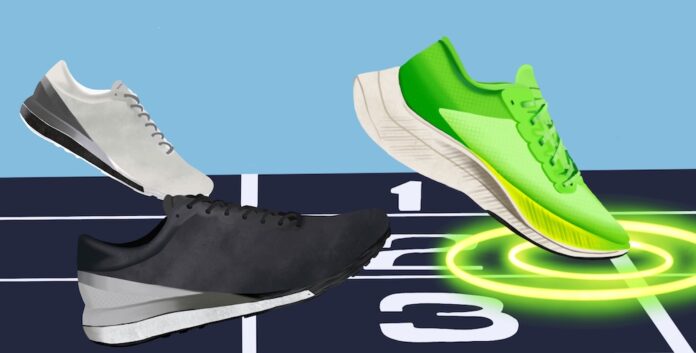The world of running is on fire. Since 2019, an unprecedented 21 world records have been broken. Eliud Kipchoge redefined the limits of human achievement as the first athlete to break two hours in the marathon. His 1:59:40 performance averaged out to an astonishing 4 minutes and 34 seconds per mile, for 26.2 miles. In just this winter’s indoor season alone, we have seen nine new national records in men’s competition along with five new national records and a world record in women’s competition. As a fan of the sport and a runner myself, I have been ecstatic to witness such an unparalleled period of racing. But the flames of competition have sparked a growing controversy over the legitimacy of these new times.
Of the 21 world records set in the past two years, all but one of the records were run in what are being called “super shoes.” Departing from the minimalist builds of previous racing shoes, these new shoes combine lightweight, responsive foam with carbon fiber plates to increase energy return for the athlete. Detractors argue that these new shoes function as a form of technological doping and need to be recorded with an asterisk to delineate them from what British Olympian Tim Hutchings calls “real, unaided” times.
I am not saying the advances in shoe technology provide zero benefit for athletic performance — it is undeniable that they do in some capacity. But the borderline obsession surrounding this conflict in the running community needs to stop. Not only does fixating on the contribution of the shoe technology undermine the hard work of the athlete, but it distracts from the beautifully pure form of competition that running provides, ultimately undermining the sport’s ability to grow.
To understand the origin of the conflict, we need to go back to 2017. In what I believe to be the greatest marketing scheme of the decade, Nike released the Zoom Vaporfly 4%, a running shoe guaranteeing a 4 percent improvement in running economy. Backed by studies done at Brigham Young University and the University of Colorado Boulder, Nike’s new shoe became the premier technology in the sport. Having caught its rivals with their pants down, Nike rode the momentum to reclaim its spot at the top of the running brand hierarchy. However, all this publicity and success triggered a backlash from traditionalists and purists worried what this new technology might do to the sport. They claimed that, at the current trajectory, races would become nothing more than a Meet the Robinson’s science fair where the athlete with access to the best technology would hold a monopoly over world records and Olympic golds. In this reality, running times would become irrelevant and the sport would fade into the abyss.
What is missing from the equation is common sense. Advances in technology are not new — they have been happening since the dawn of the sport and will and should continue. It would be ridiculous to argue that Sir Rodger Banister’s 3.59.4 mile should still be recognized as the world record because he ran it on a cinder track wearing, essentially, dress shoes with nails sticking out of the bottoms. The implementation of polyurethane and now vulcanized rubber tracks have likely provided a greater benefit to athletic performance compared to any other variable, but we accept it, nonetheless, without batting an eye.
With what we know today, the training regimen of great athletes, like three-time Olympian and former world record holder Jim Ryun, are laughably bad. He was known to run interval workouts at volumes 52 times his race distance, a practice exercise physiologists now know yields marginal returns and increases the chance of injury and burnout. We don’t, however, ridicule current athletes for training in programs optimized for their disciplines and physical attributes. Athletes who competed 50 years ago were at a severe disadvantage to the athletes who compete now, and that’s normal. As a species, we innovate, we improve and we evolve.
Outside of the running world, this advancement exists too. Over the course of the first three National Football League games this past season, Seattle Seahawks quarterback Russell Wilson threw for a combined 14 touchdowns, breaking the record for the best start by a quarterback in NFL history. If the mentality in the running community were applied here, there would be outrage over the fact that Wilson spends over a million dollars each year to pay for his “performance team” consisting of a physical therapist, massage therapist and team of chefs, along with treatment in a hyperbaric chamber and other futuristic recovery techniques. The likes of Otto Graham and Y.A. Tittle did not have access to these technologies — nor did they have the means to invest in their bodies the way Wilson does — but the perceived accomplishment of Wilson’s is not worse off because of it. This is where mainstream sports thrive and running tends to falter. While sports like football, basketball and soccer succeed in highlighting the athleticism and competition of their athletes, the members of the running world are stuck chasing their tails over the few centimeters of foam an athlete decides to strap to the foot.
With the Tokyo Olympics set to start in July and athletes running faster than ever, the sport of running has a great opportunity. Rather than letting discourse be overwhelmed by trivial arguments, we should do everything we can to highlight the competition, propagate the performances and leave the bickering to Statler and Waldorf.
![]()



































